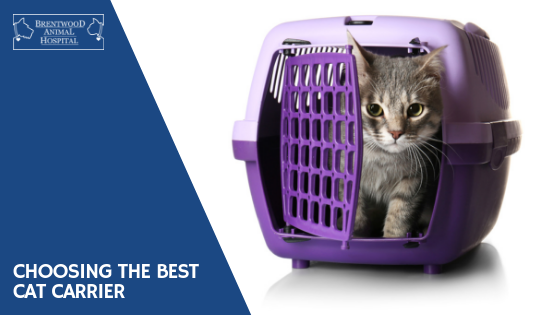All cat owners should have a cat carrier to safely transport their cat to and from the veterinarian, travel, and also to provide a safe place for the cat in the event of an illness or emergency. While there are many cat carriers on the market, we recommend a hard-shell carrier like this one.
Ideal features are:
- Hard-shell carriers that can be easily cleaned and disinfected
- Large enough for your full-grown cat
- Both a top and front opening
- Can be disassembled (e.g. the top half removed. This way your cat can remain in the bottom of a carrier during an exam, which can help them feel more secure)
Tips for Acclimating Your Cat to the Carrier:
- When you first get the carrier, and again a few days before any anticipated, travel, get your cat carrier out and leave it in a location where your cat spends a lot of time.
- Place soft, familiar bedding inside the carrier. Ideally, if your cat has a special bed or fabric that has your scent, this can help them feel more secure. You may also want to try wiping your carrier with a Feliway wipe and/or spraying the bedding with the Feliway calming pheromone spray
- Place treats, toys and catnip inside the carrier to encourage them to enter it on their own. Don’t close them in on the first time they make it inside, and let them come in and out freely a few times before you transport them.
Transporting Your Cat in the Carrier
- Although most cat carriers have a handle, cats actually do better when the carrier is held from underneath. Support and stabilize the carrier when lifting and moving it, holding it close to your body and keeping it level.
- In the car, place the carrier in an area of minimal movement, such as on the floor behind the passenger seat.
- Minimize the cat’s view out of the carrier by covering it with a towel, leaving only one end open for ventilation. Our team will offer you a Feliway-sprayed towel to cover the carrier in the waiting room and exam room until time for their visit to help minimize the stress!

